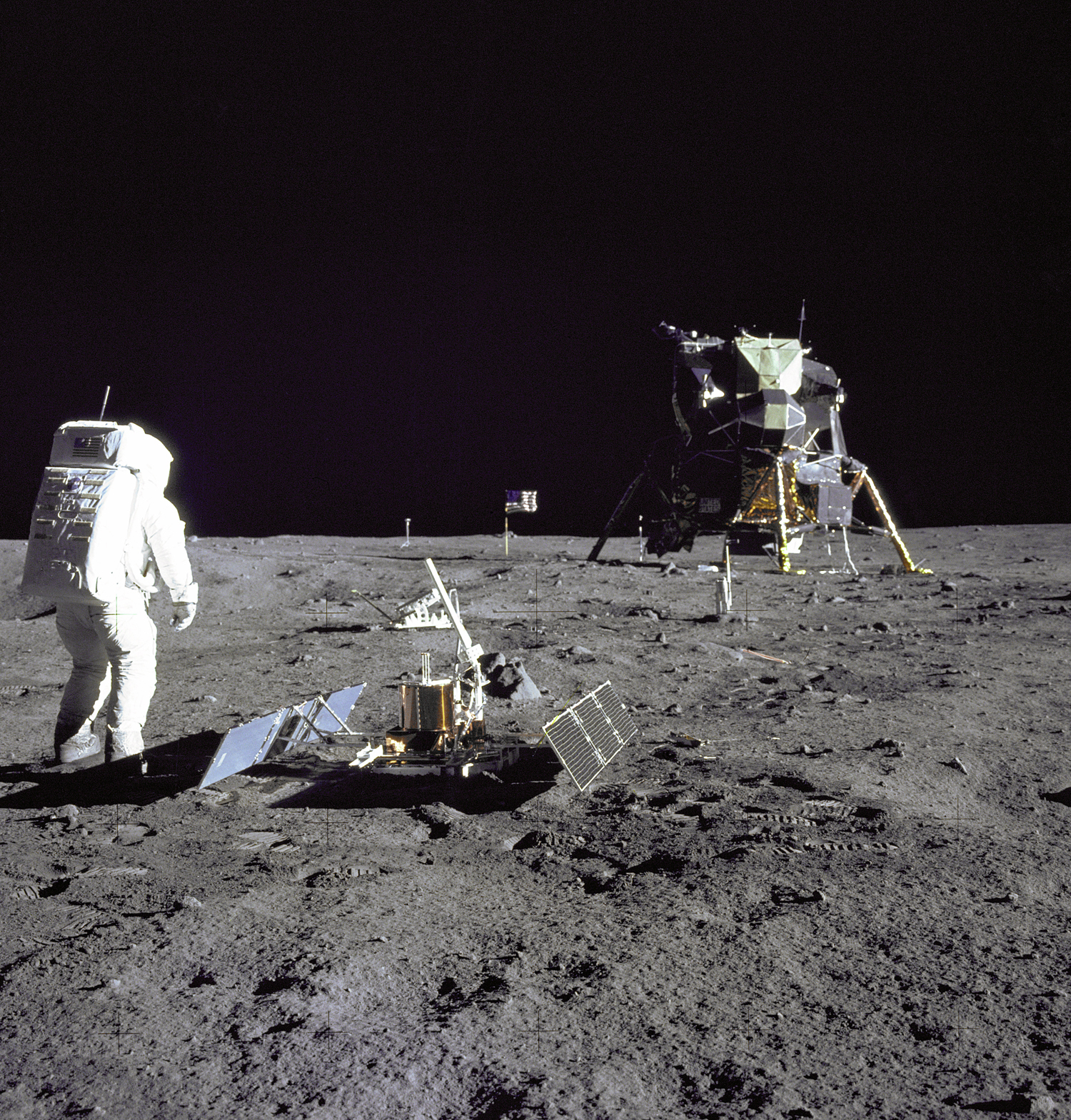Apollo 11 “We came in peace for all mankind”
A vital part of the Apollo 11 mission was to collect rock samples to return to eagerly awaiting scientists for analysis back on Earth. But how could the first humans on the moon resist leaving a message for future visitors to find?
A ready-prepared package of scientific equipment and commemorative items was taken to the moon so that the crew could leave their mark and make important experiments. Armstrong and Aldrin spent a total of 2h 31min 40sec outside of the Eagle on the moon’s surface, creating a brand new FAI record. They had this short window of time to perform various tasks:
Scientific samples
The EASEP - ‘Early Apollo Scientific Experiments Package’ - was deployed by the astronauts. They managed to penetrate slightly below the dusty lunar surface to collect around 6kg of soil for analysis. Other experiments they conducted were to reflect light back to earth using a Laser Ranging Retroreflector, measuring lunar shock waves (‘moonquakes’) using seismic equipment, and collecting particles of solar wind on a Swiss-designed panel of aluminium.
The astronauts moved quickly, and were constantly monitored to check their metabolic rates and the temperatures inside their space suits. Although Armstrong's metabolic rate was very high, no ill-effects were observed and NASA mission control granted extra time to conduct the experiments.

Foreground shows the Passive Seismic Experiment Package; beyond it is the Laser Ranging Retro-Reflector (LR-3).
Footprints and flags
Whilst descending the ladder from the Eagle, Armstrong uncovered a plaque which was signed by President Nixon and the three astronauts which bore the inscription:
Here men from the planet Earth first set foot upon the Moon, July 1969 A.D. We came in peace for all mankind.
A memorial bag containing a gold replica of an olive branch was left behind on the moon, as well as a small silicon disc containing messages of peace from 73 leaders from around the world. Armstrong also left commemorative medallions bearing the names of the astronauts who lost their lives in the years of testing building up to the first spacewalk.
A specially-designed American flag was erected, despite the pair only managing to insert it a few centimetres into the lunar earth. Unfortunately the flag was knocked down by the blast of the rocket as the Eagle launched, but as there is no wind to blow the moon dust around, it is likely that Aldrin and Armstrong’s footprints still remain on the lunar surface to this day.
Further information
Images: NASA

